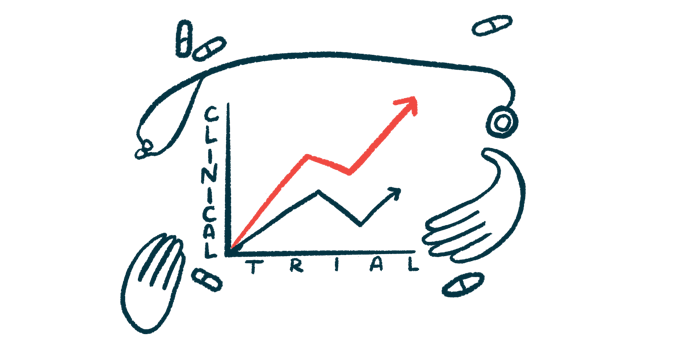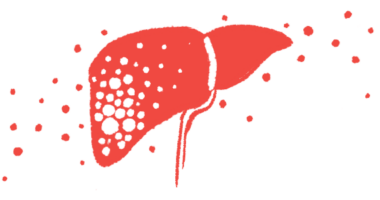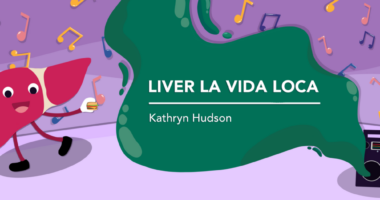Phase 3 trial of lanifibranor for MASH completes enrollment
Inventiva sees top-line results in 2026 2nd half

Enrollment is complete for a Phase 3 clinical trial testing lanifibranor in people with metabolic dysfunction-associated steatohepatitis (MASH) — a severe type of fatty liver disease — and advanced liver scarring.
If positive, top-line results from the global study, dubbed NATiV3 (NCT04849728), are expected to support applications for lanifibranor’s regulatory approval, according to developer Inventiva.
“The completion of enrollment of NATiV3 marks a significant milestone in the development of lanifibranor,” Frederic Cren, CEO and cofounder of Inventiva, said in a company press release. “With topline results expected in the second half of 2026, lanifibranor could potentially be the next oral therapy approved for the treatment of patients with MASH.”
Fatty liver disease is characterized by excessive fat accumulation in the liver. MASH is an advanced stage of the condition in which fat buildup gives rise to inflammation and scarring (fibrosis). This can eventually cause serious liver harm, including cirrhosis, when the liver is scarred and permanently damaged, and associated liver disease symptoms. MASH occurs in the context of cardiometabolic risk factors such as obesity and type 2 diabetes, which is marked by high blood sugar levels.
There aren’t many MASH treatment options, with Rezdiffra (resmetirom) being the only medication on the market. Disease management relies heavily on lifestyle changes to control cardiometabolic risk factors.
Breakthrough therapy
Lanifibranor is an oral small molecule designed to activate three forms of PPARs, a group of proteins that regulate genes involved in MASH-related processes such as inflammation, scarring, and metabolic factors.
It received breakthrough therapy designation in the U.S. for the treatment of MASH, a status designed to accelerate its clinical development and regulatory review.
“The unmet medical need for patients with MASH is significant, and lanifibranor’s unique mechanism of action could offer a tailored and promising potential solution, particularly for patients with advanced fibrosis and type 2 diabetes,” said Arun Sanyal, MD, director of the Stravitz-Sanyal Institute for Liver Disease and Metabolic Health at Virginia Commonwealth University and a NATiV3 co-principal investigator.
That’s been supported by data from clinical trials, including the six-month Phase 2 LEGEND trial (NCT05232071) involving adults with MASH and poorly controlled type 2 diabetes.
LEGEND’s results, reported in January, showed that lanifibranor, when used alone or when combined with the diabetes medication Jardiance (empagliflozin), led to significant reductions in liver fat, MASH activity and fibrosis, and blood sugar relative to a placebo.
In the earlier, placebo-controlled Phase 2b NATIVE trial (NCT03008070) involving adults with MASH, lanifibranor was associated with significant reductions in MASH activity and a variety of disease-related biomarkers after about six months of treatment.
“The compelling data from the NATIVE Phase 2b trial of lanifibranor after just six months of treatment, instill strong confidence in the potential of lanifibranor to become a cornerstone therapy for patients with MASH, if approved,” Sanyal said.
The NATiV3 trial is designed to assess the long-term safety and efficacy of lanifibranor against a placebo in adults with MASH and moderate or severe liver fibrosis.
Its main study group involves 1,009 people with biopsy-proven MASH and advanced liver fibrosis, but not cirrhosis. This exceeded the original enrollment target of 969 patients, according to Inventiva.
Participants were randomly assigned to receive, once daily, oral tablets of either lanifibranor (800 mg or 1,200 mg) or a placebo for about 1.5 years, with the main goals of evaluating safety and the proportion of participants who achieve MASH resolution and fibrosis reduction.
The study also enrolled an exploratory group of 410 adults who were diagnosed with MASH but didn’t meet the study’s liver biopsy criteria, more than the 350 participants initially planned. Inventiva expects that data from this exploratory group will help generate additional results using noninvasive tests to support future regulatory filings.
After completing the trial’s placebo-controlled part, participants are able to enter its extension phase, in which all can receive lanifibranor for about a year.
An interim, blinded analysis of NATiV3’s pooled treatment and placebo group data showed that the study participants saw improvements in liver function and metabolism, as well as reductions in liver fibrosis.
But because the analysis was blinded, meaning it was not revealed who received lanifibranor and who received the placebo, the benefits could not be attributed to the experimental therapy at the time. Top-line data will determine whether these benefits were indeed associated with lanifibranor.
Completion of enrollment in NATiV3 satisfies conditions Inventiva needed to meet before receiving certain financing, which included having the last participant in the NATiV3 main group randomly assigned by the end of the month.







